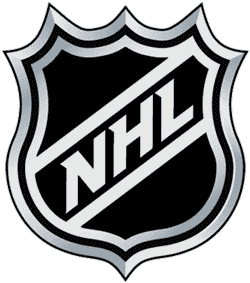 October 11 was supposed to be a joyous day for hockey fans. It was supposed to be opening night of the league they love dearly. Instead, it’s a reminder of how far away the NHL season might be. The league is in its second lockout in less than 10 years. With a lack of foresight in the last collective bargaining agreement, the league is right back where it started, after steadily gaining popularity and ratings over the last six years, despite not having a major television deal. Fans, players, and everyone else involved are hoping that this is not a repeat of the 2004-05 lockout, which lasted the entire season.
October 11 was supposed to be a joyous day for hockey fans. It was supposed to be opening night of the league they love dearly. Instead, it’s a reminder of how far away the NHL season might be. The league is in its second lockout in less than 10 years. With a lack of foresight in the last collective bargaining agreement, the league is right back where it started, after steadily gaining popularity and ratings over the last six years, despite not having a major television deal. Fans, players, and everyone else involved are hoping that this is not a repeat of the 2004-05 lockout, which lasted the entire season.
As it always is, the league and its owners are butting heads with the players association. Revenue sharing, player safety, and salary rollbacks are the hot button issues, things that should have been solved back in 2005 but concessions from both sides to end the labor stoppage left a lot of loose ends. The NHL instituted a salary cap in its new CBA in 2005, but that proved to be a fruitless endeavor. Back then, both sides agreed to a hard cap of $39 million dollars. Like clockwork, the salary cap has risen every season since the agreement, climbing above $60 million for the 2011-12 season.
Without getting into specifics about the lockout, the players will have to make concessions if the league is going to have a season. Rollbacks, changes to contract length, free agency, and the removal of arbitration are just some of the issues that the league and the players are fighting over. Many of the provisions are understandable from an ownership perspective, as numerous loopholes were exposed by general managers and player agents following the 2005 CBA. The opposition from the players is also justifiable, since the league and its owners allowed these practices to continue and the players are unwilling to succumb to less money and less leverage in contract negotiations.
Regardless of the issues at hand, the league’s rinks will be dark for the third time during Commissioner Gary Bettman’s watch. The league locked out in 1993, 2004, and this current one in 2012. He also had a lockout with the referees in 1993. Another labor stoppage is extremely detrimental to the sport, which was gaining a lot of popularity due to the bad business practices of the NBA and allowing super teams like the Miami Heat and Los Angeles Lakers. The NHL had its window and was growing, with two successful Olympic tournaments in 2006 and 2010, along with spectacles like the Winter Classic, an outdoor hockey game that took place on New Year’s Day.
The league has already canceled the first two weeks of games, leaving players scrambling to find places to play during the lockout, with most of them going to play in European Elite Leagues. Some of them are even playing with the same teams they played with during the previous lockout. Rick Nash and Joe Thornton both returned to
Other players, like Ryan Nugent-Hopkins of
However, some of the biggest casualties in this lockout mess are team employees. Several NHL teams have cut down on their sales and hockey operations departments, leaving people filing for unemployment. Others have severely reduced the hours of their staffs. Ushers and concession workers will likely be putting fewer gifts under the Christmas tree this year. The league offered extremely low-interest loans to its officials, who can still work in minor leagues or the lower divisions of collegiate hockey, but will not make enough to live on in those games.
The trickle down effect resulting from the NHL lockout is another reason why a resolution needs to happen quickly. Players are still getting paid, albeit overseas, owners are still making money from other interests. But, it’s the common man and woman who are most affected, including fans. Season ticket holders have had the option to keep their money and trust in the organization or get refunds.
Unfortunately, there appears to be no end in sight. Most of the meetings before the lockout revolved around discussion of issues, resulting in few proposals. Once the players are playing, no matter where it is, there will be less interest from them in a resolution. That’s why these lockouts have a tendency to last. The owners will eventually be the ones who are losing money, so the theory from the players and their representation is that the owners will have to cave first. When the owners didn’t cave in 2004-05, the entire season was washed out. That looks to be a possibility here.
Fall colors and cooler temperatures usually signify the beginning of the NHL season. This year, however, they signify what could be a colder than usual winter for hockey fans.